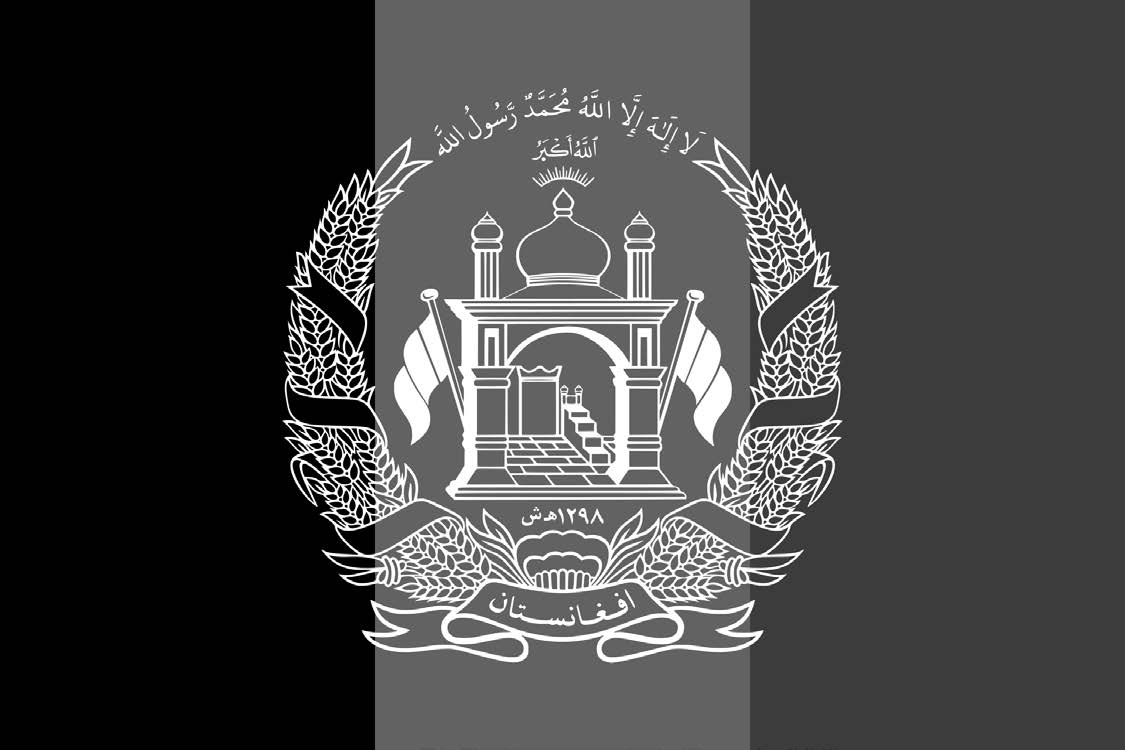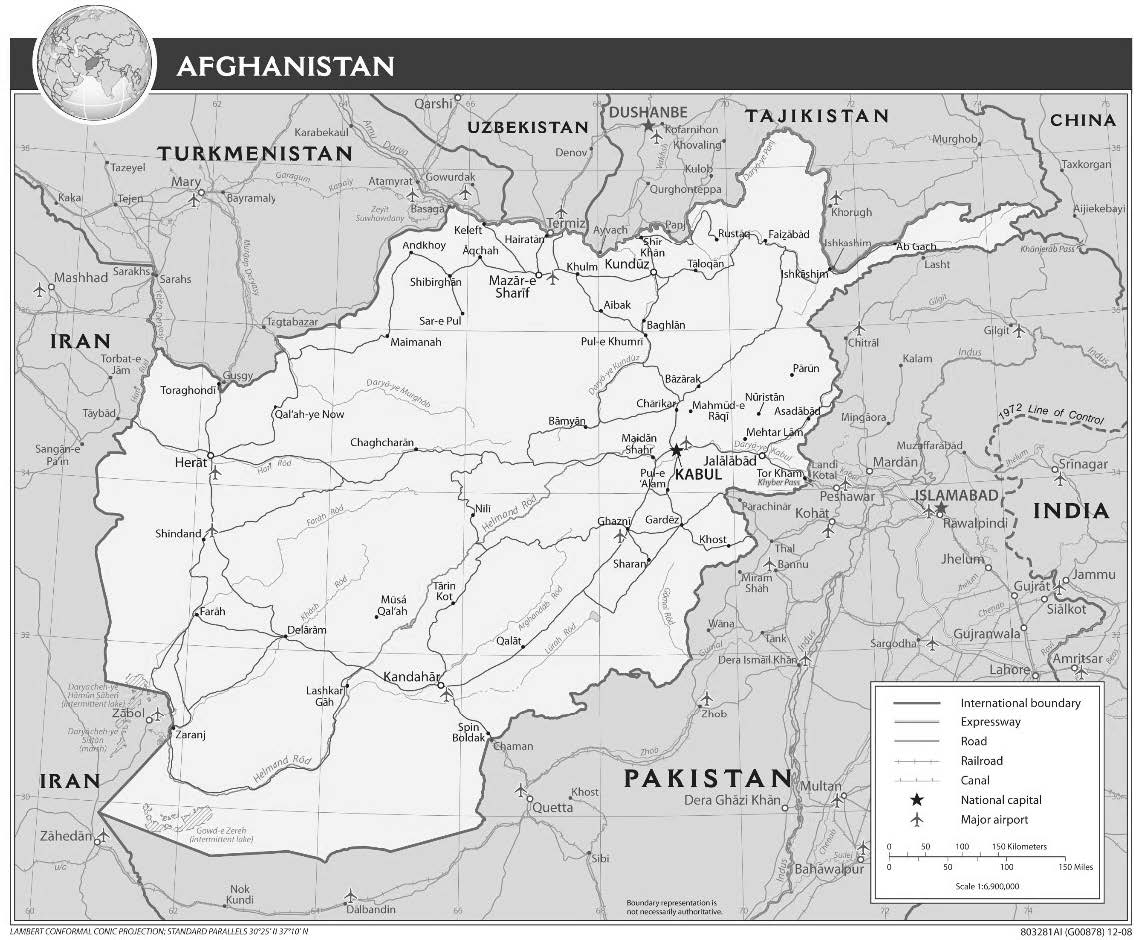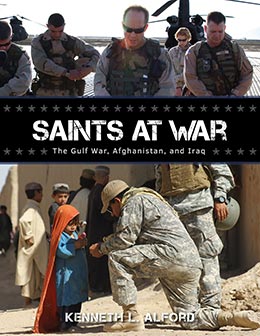Overview
Kenneth L. Alford, “The War in Afghanistan: Overview,” in Saints at War: The Gulf War, Afghanistan, and Iraq (Provo, UT: Religious Studies Center, Brigham Young University; Salt Lake City: Deseret Book), 51.
 National flag of Afghanistan
National flag of Afghanistan
 Map of Afghanistan
Map of Afghanistan
The world changed on September 11, 2001—the infamous 9/
Afghanistan has suffered four decades of continuous warfare. Roughly the size of Texas, it has a population of thirty-one million people. Almost half of the country is over six thousand feet in altitude. The mountainous terrain and forbidding weather can be harsh. War has destroyed much of the country’s infrastructure, making it one of the poorest nations on earth. Ninety-nine percent of the country is Muslim—predominantly Sunni. There is a 75 percent illiteracy rate, life expectancy is only forty-three years, and the infant mortality rate is the highest in the world. Only 12 percent of the land can support agriculture, and water is scarce. Poverty, drug trafficking, and other criminal enterprises are widespread.[2] It has been said, only partly in jest, that the only measure in which Afghanistan leads the other nations of the world is alphabetically. To say Afghanistan is challenging—geographically, culturally, politically, and militarily—is an understatement.[3]
The first U.S. Special Forces deployed to northern Afghanistan less than one month after the September 11 attacks. Rapid success soon placed the United States and its coalition partners in control of major cities throughout the country. By mid-December, the Taliban had been removed from power. Despite rapid initial success, the Taliban soon resurfaced across the country (especially along the border with Pakistan and in the Helmand Province) and increasingly threatened coalition forces.
Operation Enduring Freedom lasted from 2001 to 2014, when the United States formally ended combat operations in Afghanistan. On May 2, 2011, Osama bin Laden was killed in Pakistan by U.S forces. On December 28, 2014, President Barack Obama observed that “for more than thirteen years, ever since nearly 3,000 innocent lives were taken from us on 9/
After the president’s remarks, Chuck Hagel, U.S. secretary of defense, commented, “At the end of this year, as our Afghan partners assume responsibility for the security of their country, the United States officially concludes Operation Enduring Freedom. In 2015, we begin our follow-on mission—Operation Freedom’s Sentinel—to help secure and build upon the hard-fought gains of the last thirteen years.” Secretary Hagel expressed his “deep gratitude to all U.S. personnel, both military and civilian, who have served in Afghanistan since 2001, many on multiple deployments. I also thank the thousands more who were a part of the mission at home and around the world. In fighting America’s longest war, our people and their families have borne a heavy burden, and some paid the ultimate price.”[5]
The war in Afghanistan is by far the longest continuous military engagement in the history of the United States. As a special double issue of the Smithsonian magazine observed in 2019, “Exactly when the war in Afghanistan surpassed the Vietnam War as America’s longest overseas war is debated—the comparison depends on which benchmarks you use. Last September [2018], however, the United States reached an indicator that clears away at least some of the confusion: The first cohort of Americans who were born after the terrorists attacks of September 11, 2001, became old enough to enlist in the war that followed,” concluding that “Whatever else it is, the Global War on Terrorism is now a second-generation war.”[6] (See the Afghanistan timeline for additional details.)
Notes
[1] “America at War: The Nation’s Epic, Expanding Fight Against Terrorism Overseas,” Smithsonian 49, no. 9 (January/
[2] Central Intelligence Agency, “Afghanistan,” The World Factbook.
[3] Portions of this chapter appeared in Kenneth L. Alford, “Organizing the Church in Afghanistan,” in The Worldwide Church: The Global Reach of Mormonism, ed. Michael Goodman and Mauro Properzi (Provo, UT: Religious Studies Center, Brigham Young University; Salt Lake City: Deseret Book, 2016), 49–70.
[4] “Obama, Hagel Mark End of Operation Enduring Freedom,” DoD News (U.S. Department of Defense), December 28, 2014.
[5] “Obama, Hagel Mark End of Operation Enduring Freedom.”
[6] “America at War,” Smithsonian, 28.
